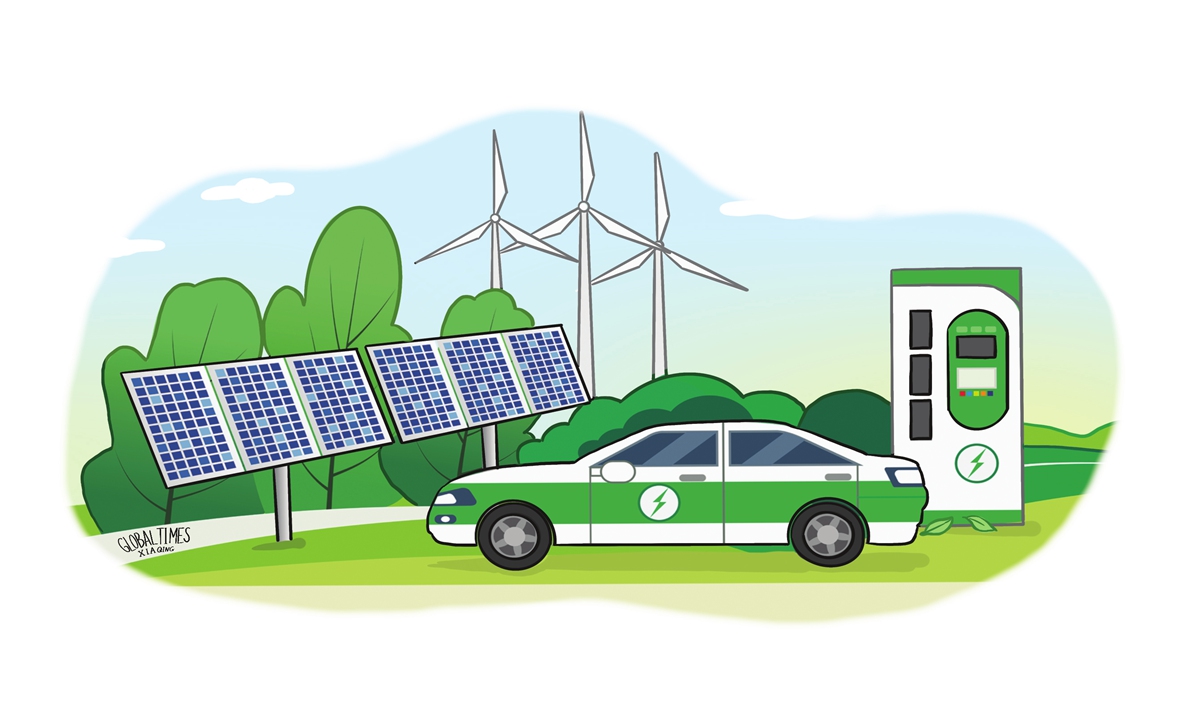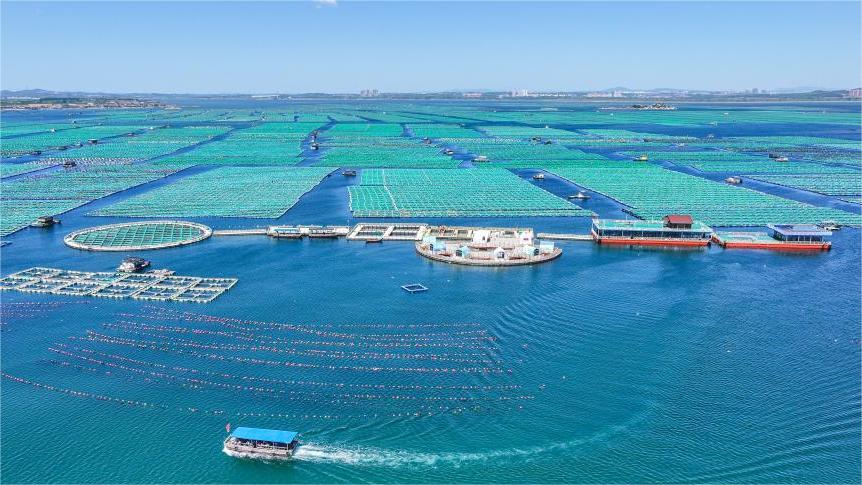Long-term vision, national old-for-new initiative, will further boost China’s low-carbon technology success

Illustration: Xia Qing/GT
China's ongoing campaign to encourage enterprises and households to increase trade-ins of old manufacturing equipment and rundown consumer goods with new, modern and tech-studded ones is gaining pace. This is an effective step to boost domestic consumption and reduce the country's carbon footprint, which is good for China's all-around sustainable development in the long run.
The highly accommodative economic policy put in place by China's central government earlier this year will help modernize the country's massive inventory of industrial and household equipment. At the same time, it will stimulate the positive sentiment of the country's vast consumers, persistently boosting GDP expansion.
The sheer size of China's existing industrial and household inventory, targeted by the nationwide old-for-new campaign, will demonstrate the significance of the government-coordinated initiative. This will create a new horizon for China's development in the coming years.
Tens of millions of Chinese consumers are increasing their spending on consumer goods under the new round of trade-in program, unleashing huge consumption potential, bolstering sustained recovery and injecting new momentum into the country's economic growth. China will also provide financial support to establish recycling systems for discarded home appliances. Local governments and appliance companies are encouraged to offer preferential policies for consumers who buy or trade for green and intelligent home appliances.
Through the massive trade-in program, new machine tools and manufacturing equipment installed at Chinese factories and assembly lines will strengthen the country's manufacturing power. Targeted efforts to incentivize big-ticket item consumption like electric cars, home appliances, and furniture with discounts and coupons will boost retail sales, leading to increased factory production. Trade-ins in the field of home décor, kitchen appliances and bathroom products will drive the development of new and modern building materials.
According to the government-released plan, by the end of 2025, the country will increase the recycling volume of old home appliances by 15 percent and the recycling volume of old-fashioned, environmentally polluting ICE (internal combustion engine) vehicles by 50 percent from 2023 levels. The program will continue over several years to provide lasting momentum for the country's economic growth.
Looking back at the past 45 years, the Chinese government has consistently accurately predicted the trajectory of global industrial evolution and people's consumption patterns. The government has become increasingly forward-looking and visionary.
Many years ago, policymakers began focusing on nurturing China's homegrown innovation capability in low-carbon industrial production, investing significant resources in scientific exploration and technological development. This effort has led to the country's current advantages in manufacturing high-end batteries, electric vehicles, solar panels and wind turbines, as well as modern transport systems like high-speed trains and urban metro networks.
In the years ahead, a country's low-carbon manufacturing technology and industrial capacity will decide its role in leading and driving the global economy. Countries, regardless of size, will inevitably embrace clean new energies and low-carbon lifestyles as the only sustainable way for the Earth.
China's growing low-carbon manufacturing power also illustrates that low-carbon industrial capacity is, and will continue to be, advanced capacity welcomed by the world, rather than the "overcapacity" claimed by US officials. The Biden administration has not considered the long-term implications of imposing excessively high tariffs on Chinese EVs, batteries, solar panels and other high-tech products. This reckless and even thoughtless decision will inflict long-term harm on the US' green transformation.
It is wise for China to promote a new wave of massive trade-ins of old manufacturing equipment and rundown consumer products, with modern, low-carbon, intelligent technology with internet connectivity or AI guidance, which are offered at a low price. Affordability, exemplified in the inexpensive batteries and EVs now being assembled in China, will be a significant variant for global consumers when they make purchases, whether by opening their wallets or using their mobile phones to pay.
Data from China's Ministry of Commerce showed that, as of the end of 2023, the number of household appliances in major categories such as refrigerators, washing machines and air conditioners had exceeded 3 billion units, indicating huge potential for renewal and replacement.
During the country's old-for-new promotional campaign, consumers can enjoy subsidies equivalent to 10 percent of the product price, as well as discounts and shopping coupons given by retailers. Green and energy-saving household appliances containing innovative technology are highly encouraged as they are both of good quality and cost-effective.
Sales of green and energy-saving electric appliances skyrocketed by 110 percent during the five-day May Day break from May 1 to 5, compared with the same period last year. The new initiative has significantly unleashed new consumer vitality in China. To accelerate the transition to EVs replacing ICE cars, a number of Chinese automakers including BYD, Nio and Xpeng have offered preferential terms for consumers who scrap old and polluting cars in exchange for zero-emission EVs.
In summary, China's national old-for-new initiative is conducive to gradually phasing out fossil-fuel guzzlers and other outdated equipment and products with clean EVs and technology-intensive replacements. This initiative will bolster the country's industrial upgrade, stimulate the purchasing desire of Chinese consumers and improve people's quality of life. Ultimately, the initiative will support the rising competitiveness of the Chinese economy.
Photos
Related Stories
- White House unveils new protectionist tariffs on Chinese-made EVs
- Germany, Sweden express caution on tariffs on Chinese EVs
- Are tariff hikes on Chinese EVs a boon for America's green industry?
- Chinese EV brand sets up logistics center at Spanish port
- Commentary: China's booming new energy industry a boon for the world
- Experts say US forcing nation to hit back
Copyright © 2024 People's Daily Online. All Rights Reserved.









